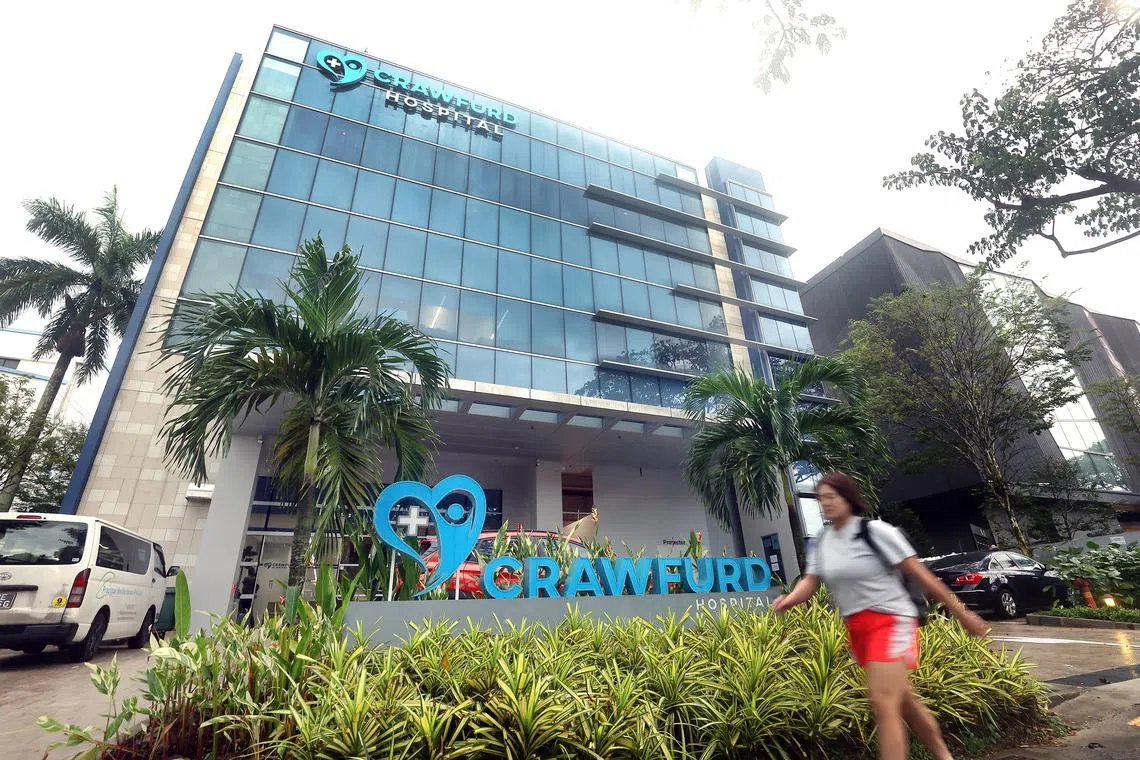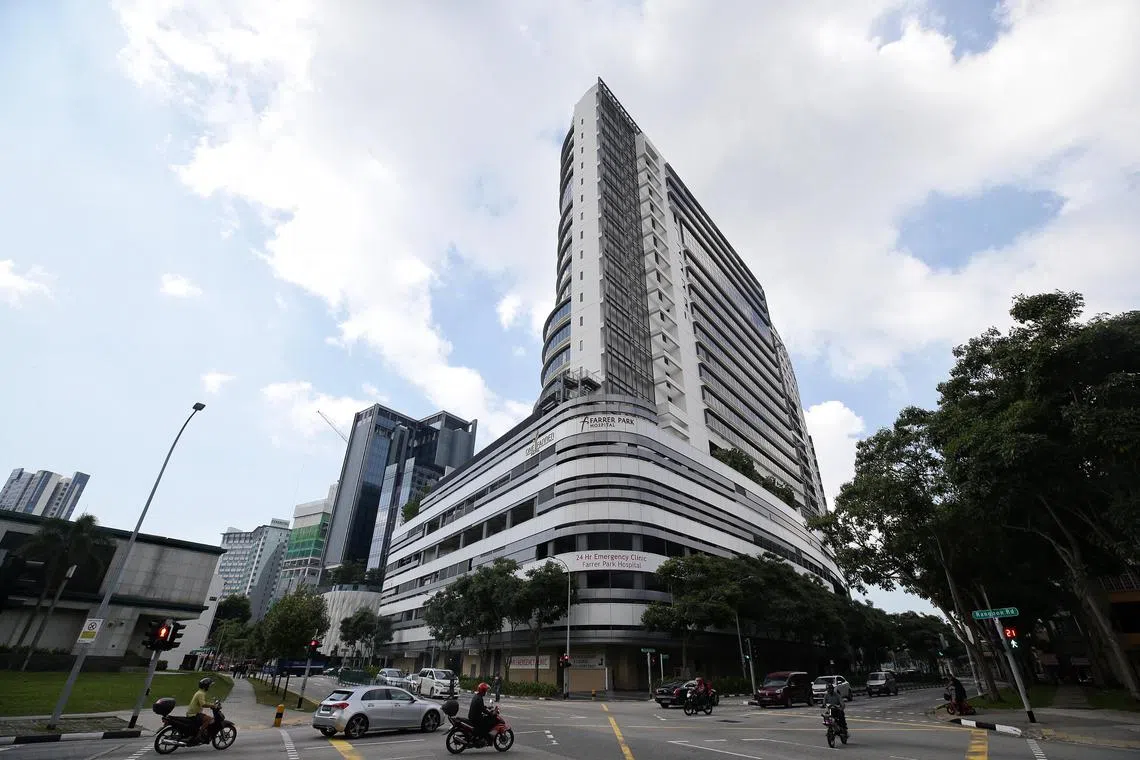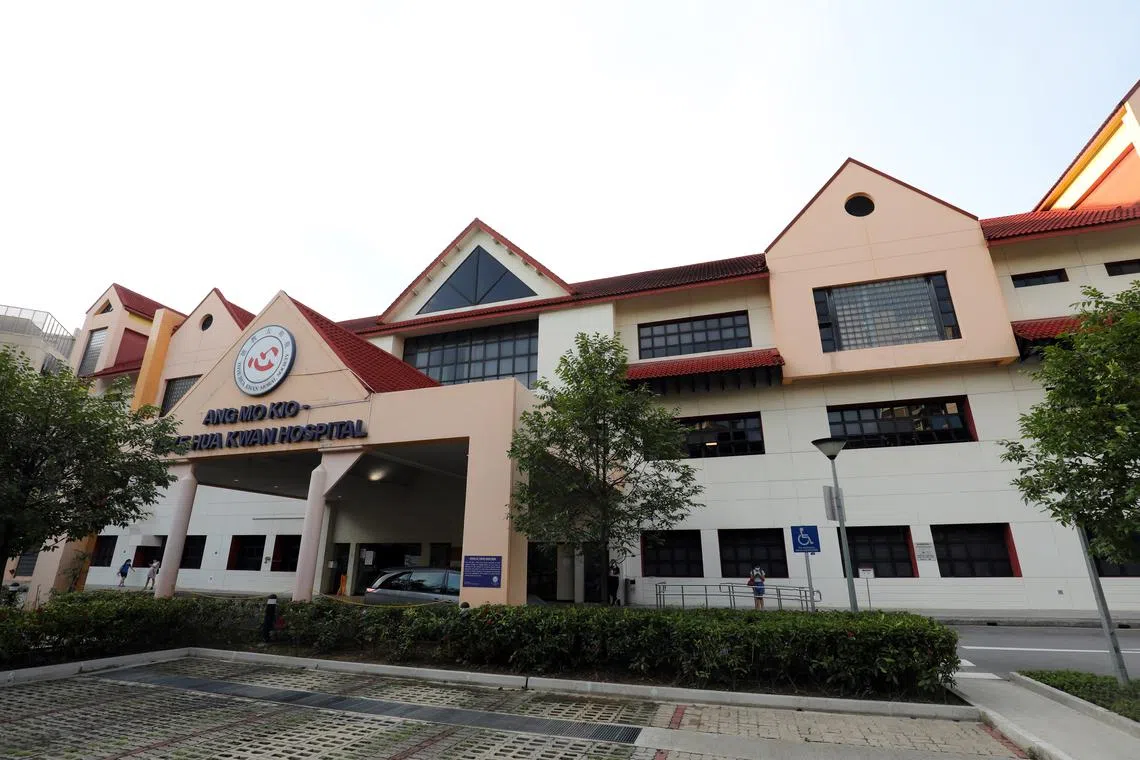News analysis
Can Singapore get another not-for-profit hospital to help keep private sector costs down?
Sign up now: Get ST's newsletters delivered to your inbox

Singapore currently has one private not-for-profit hospital – Mount Alvernia Hospital – out of a total of 19 acute hospitals, of which 10 are government-owned.
PHOTO: LIANHE ZAOBAO
Follow topic:
SINGAPORE – Many industry players and watchers were caught by surprise when the Ministry of Health (MOH) announced on Jan 8 its interest in having a new not-for-profit private acute hospital.
The ministry invited private healthcare operators to participate in an industry consultation from late January to April.
There is certainly a dire need for a new hospital – or at least more acute hospital beds. The severe bed crunch that public hospitals have been experiencing
Having another private hospital is also in line with the tenets set out in the 1993 White Paper on Affordable Health Care, which had aimed for a public-private mix of 70:30 for acute hospitals. Today, it stands at roughly 83:17.
However, what came as a surprise was that under the proposed model, profit from the hospital cannot be distributed to shareholders. It must either be reinvested into the hospital or used for “charitable or other not-for-profit activities”.
The question many people immediately asked was: Why would any private hospital operator want to run a not-for-profit hospital? It would have owners and shareholders who expect a profit from any venture.
Singapore has one private not-for-profit hospital – Mount Alvernia – out of a total of 19 acute hospitals, of which 10 are government-owned.
The 319-bed Mount Alvernia Hospital is owned by the Franciscan Missionaries of the Divine Motherhood, which also owns and runs the Assisi Hospice.
The hospital was set up more than 60 years ago, with just 60 beds and a staff of 35 Roman Catholic nurses. It was given 10 years to defray the $1.6 million building cost through operational profit. It also received a lot of contributions from well-wishers, including philanthropist businessman Lee Kong Chian.
Over the decades, the hospital expanded with the addition of more wards, operating theatres, laboratories and outpatient services.
Such a slow development is no longer possible. Whoever takes on the challenge today will need to have deep pockets to finance the building of a hospital.
The most recent standalone private hospital – the 333-bed Mount Elizabeth Novena Hospital, which opened in 2012 – was built at a cost of $2 billion. More than half of that went to the acquisition of land – at a whopping $1.25 billion. That was more than double the other bids. The need to recover the high building cost will inevitably push up healthcare cost.
Land cost for a not-for-profit hospital is unlikely to be that high.
But even if the Government were to offer the land free, building costs today aren’t cheap. It will not be easy for charitable organisations to raise the hundreds of millions of dollars such a project requires – unless the planned hospital is a small one, like the 31-bed Crawfurd Hospital, which MOH classifies as an acute hospital.

The 31-bed Crawfurd Hospital is classified by MOH as an acute hospital.
PHOTO: LIANHE ZAOBAO
But a hospital that size will not do much to increase Singapore’s total acute bed capacity, which stands at around 12,000 beds today. Three smaller private hospitals – Thomson Medical, Farrer Park and Parkway East – have between 120 and 200 beds each, Gleneagles Hospital has about 220, and the rest of the private hospitals have more than 300 beds each.
Another Mount Alvernia Hospital, with 319 beds, would fit the bill.
It would certainly be good to have another such hospital as charges at a not-for-profit hospital are likely to be cheaper, if it follows the Mount Alvernia model.
The hospital has possibly the cheapest bed rates in Singapore, if government subsidies are not taken into account.
It charges $580 a night for a single-bed room – against $700 to $900 charged by other private hospitals. This single-bed room rate is also lower than that charged by most public hospitals. Similarly for the four-bed ward, Mount Alvernia’s charge of $228 is the cheapest among all acute hospitals.
So yes, having another not-for-profit private hospital would be good for the country, especially since one of the requirements is to provide some subsidised beds that could help to ease the crunch at public hospitals.
But is it something that is likely to happen?
Likely players and possible scenarios
Let’s look at who the possible players are, and why they may or may not be interested in such a venture.
MOH has invited “interested private healthcare operators” to register their interest. So this excludes the three public healthcare clusters – which are all not-for-profit organisations – from running this proposed hospital.
That narrows the field to Mount Alvernia Hospital, the other private hospitals, those who run community hospitals, and possibly a group of medical practitioners – like in the case of Farrer Park Hospital. One other possibility would be a large organisation that wants to contribute to society and hires a hospital administrator to run the hospital.

MOH has invited “interested private healthcare operators” to register interest. This narrows the field to several hospitals and possibly a group of medical practitioners – like those behind Farrer Park Hospital (above).
PHOTO: ST FILE
Existing private hospitals have the fewest reasons to take up the challenge, as their model is to make money. They might be interested if they are allowed to transfer patients from this new not-for-profit hospital to their other hospitals, or at least have the patients use the services provided by their existing hospitals – but MOH is unlikely to agree to this.
Would the private hospitals take up the offer simply to prevent a competitor from setting up? That is a bit far-fetched, as setting up and running a hospital is a major undertaking.
Associate Professor Jason Yap of the NUS Saw Swee Hock School of Public Health said: “Private healthcare providers would have to receive the right alternative incentives since they cannot do it, by definition, ‘for profit’. To set up and run such a facility could mean they deploy good staff and other resources from their usual business.”
Raffles Medical Group said it is “considering” taking part in the consultation, which runs from Jan 21 till April.
A spokesman for IHH Healthcare, the biggest private hospital operator, which runs hospitals like Mount Elizabeth and Gleneagles, said: “IHH Healthcare Singapore has always been working in tandem with the MOH to improve healthcare, and will also be participating in the consultation exercise to see how we can support these new initiatives.”
But helping MOH formulate the model does not mean these operators want to take up the challenge. Their interest might very well be to ensure that the proposed hospital poses little competition to their businesses.
How about Mount Alvernia setting up and running another hospital?
That’s a possibility. Its chief executive James Lam said it will register for the consultation because “we are interested to know more details”.
As for community hospitals, there are now nine, of which five belong to the public sector. The four not-for-profit ones are Ang Mo Kio-Thye Hua Kwan Hospital, Ren Ci Community Hospital, St Andrew’s Community Hospital and St Luke’s Hospital.
As community hospitals provide rehabilitative and sub-acute care, their patients are in a more stable condition.

Ang Mo Kio-Thye Hua Kwan Hospital, one of the four not-for-profit community hospitals.
PHOTO: LIANHE ZAOBAO
There is a huge chasm between running a community hospital and an acute hospital that needs to have operating theatres and intensive care units. It is not impossible, but it will be a steep learning curve for these charitable organisations to set up and run an acute hospital.
Another possibility is a group of doctors setting up such a hospital. They will be working there, so they can pay themselves hefty salaries and not worry about sharing any profit the hospital might generate. If this were to happen, it will be little different from having another for-profit private hospital.
Could a large organisation with deep pockets and the desire to contribute to society – Temasek, for example – set up such a hospital and hire a team to run it? This, too, is a possible scenario.
Temasek has Sheares Healthcare Group, which states on its website that it “aims to develop new healthcare delivery models and processes in the right setting by leveraging innovative technologies and operators”.
So it is no stranger to healthcare, especially since Sheares Healthcare is headed by Mr T. K. Udairam, who used to run Changi General Hospital.
Consultation useful for industry
An observer noted that MOH had not called for a tender for a hospital, but instead asked for an industry consultation. The implication, he said, is that the ministry wants to explore possibilities, including some that it might not have considered.
More clarity should emerge during the consultation. Whatever the final outcome, such a consultation is useful for looking at alternatives and for players to raise concerns. This could help not just the proposed not-for-profit hospital, but the industry as a whole.
The 1993 White Paper said: “The private sector should play a bigger role. The Government encourages civic organisations to run some subvented hospitals. This will introduce more competition and offer the public a wider choice.”
This sentiment was reflected in the press statement in which MOH said: “With increasing demand for healthcare services due to an ageing population, acute hospital bed capacity needs to be increased in both the public and private healthcare sectors.
“The new not-for-profit private acute hospital model is meant to provide more options for Singaporeans who wish to seek care in the private healthcare sector.”


